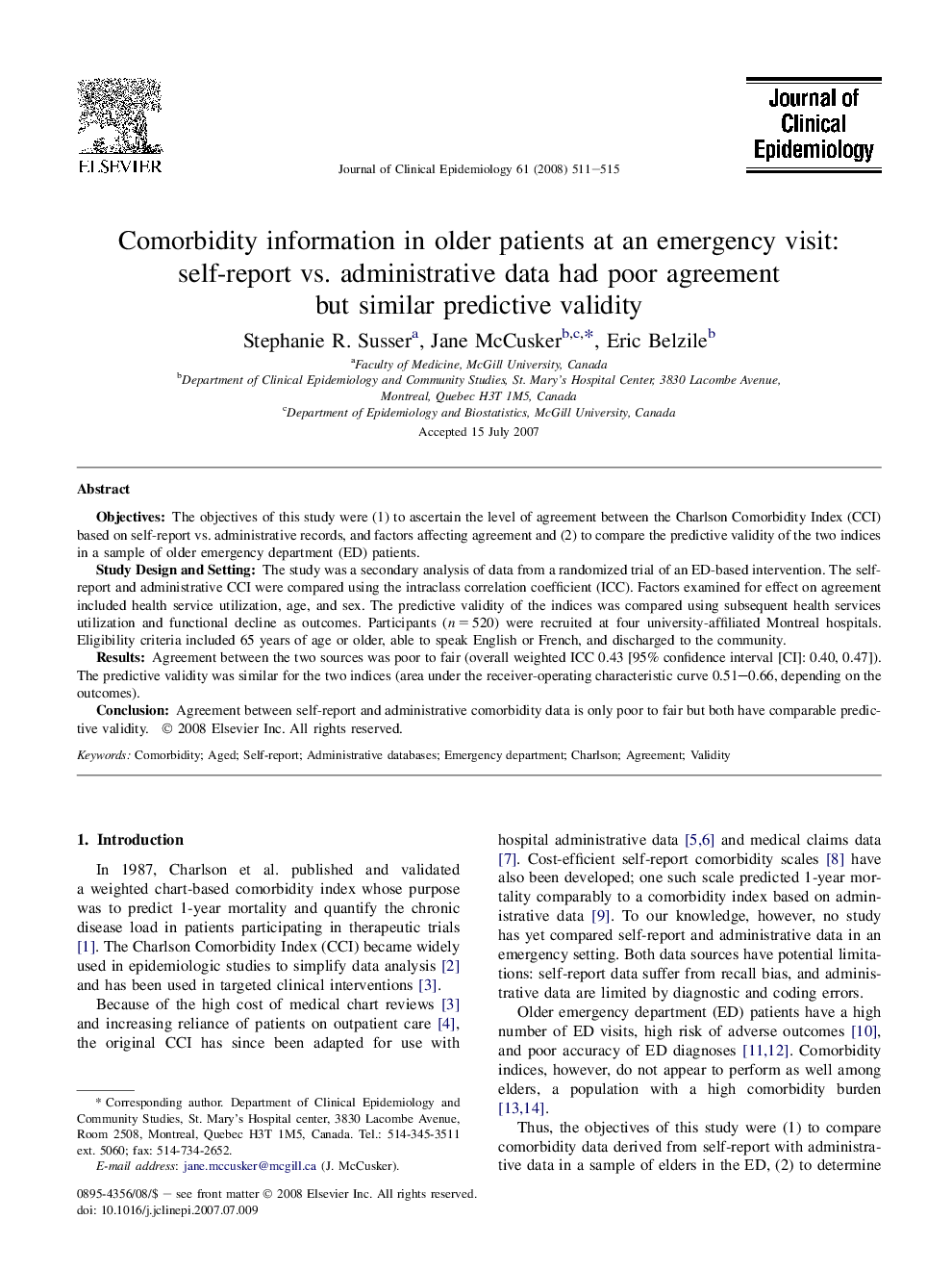| Article ID | Journal | Published Year | Pages | File Type |
|---|---|---|---|---|
| 1083841 | Journal of Clinical Epidemiology | 2008 | 5 Pages |
ObjectivesThe objectives of this study were (1) to ascertain the level of agreement between the Charlson Comorbidity Index (CCI) based on self-report vs. administrative records, and factors affecting agreement and (2) to compare the predictive validity of the two indices in a sample of older emergency department (ED) patients.Study Design and SettingThe study was a secondary analysis of data from a randomized trial of an ED-based intervention. The self-report and administrative CCI were compared using the intraclass correlation coefficient (ICC). Factors examined for effect on agreement included health service utilization, age, and sex. The predictive validity of the indices was compared using subsequent health services utilization and functional decline as outcomes. Participants (n = 520) were recruited at four university-affiliated Montreal hospitals. Eligibility criteria included 65 years of age or older, able to speak English or French, and discharged to the community.ResultsAgreement between the two sources was poor to fair (overall weighted ICC 0.43 [95% confidence interval [CI]: 0.40, 0.47]). The predictive validity was similar for the two indices (area under the receiver-operating characteristic curve 0.51–0.66, depending on the outcomes).ConclusionAgreement between self-report and administrative comorbidity data is only poor to fair but both have comparable predictive validity.
